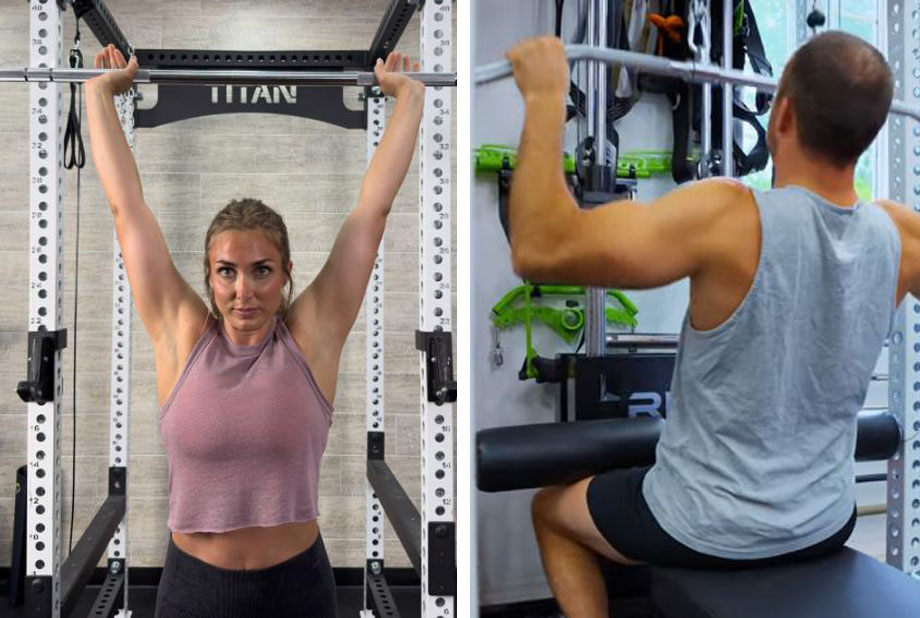We test and review fitness products based on an independent, multi-point methodology. If you use our links to purchase something, we may earn a commission. Read our disclosures.
Before you can run, you must learn to walk. While it may be tempting to jump ahead, the key to accomplishing your fitness goals lies in mastering the basics. Fundamental movement patterns like the squat, hinge, and lunge are the building blocks of all exercises, empowering anyone looking to enhance their strength, stability, and coordination.
As a certified personal trainer (CPT) who’s helped dozens of clients hone their technique and become more comfortable in the gym, I understand it can be overwhelming to learn something new. However, this comprehensive guide will give you the knowledge to execute each of the seven fundamental movement patterns safely and effectively.
RELATED: How To Bail Out Of A Squat
From breaking down the physiology to providing a robust list of my favorite exercises to highlighting potential roadblocks, I’ve compiled all the information you need to become proficient and confident. So, prepare your muscles, ligaments, and tendons for a full-body lesson on creating a stronger, more stable, and fitter version of yourself.
What Are The Seven Fundamental Movement Patterns?
Whether you’re into bodybuilding, powerlifting, or general strength training, the seven fundamental movement patterns are the foundation of all functional exercises.
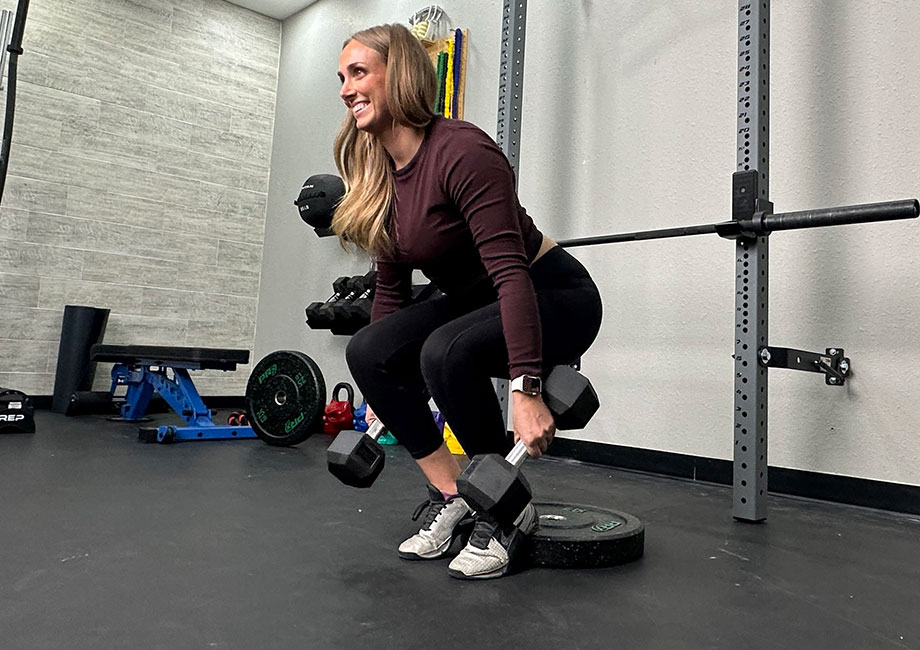
Before we do a deep dive, here’s a quick overview of each pattern:
- Squat: A strength-building movement that involves bending at the knees and hips and rising back up.
- Hinge: A hip-dominant movement crucial for posterior chain strength.
- Lunge: A single-leg movement that enhances balance and coordination.
- Push: Upper-body movements that involve pushing away from the body.
- Pull: Upper-body movements that involve pulling towards the body.
- Rotation: Movements involving twisting of the torso.
- Gait: The basic movements of walking and running, which are vital for overall mobility.
RELATED: Front Squat Fundamentals
How To Incorporate Fundamental Movement Patterns Into Your Workouts
Incorporating exercises that utilize foundational movement patterns is essential for a well-rounded strength and conditioning routine. Here are some of my favorite exercises for each pattern and brief explanations on executing them correctly.
Squat
Squats are essential for building lower-body strength and improving mobility. After mastering the bodyweight squat, you can step up to more challenging variations.
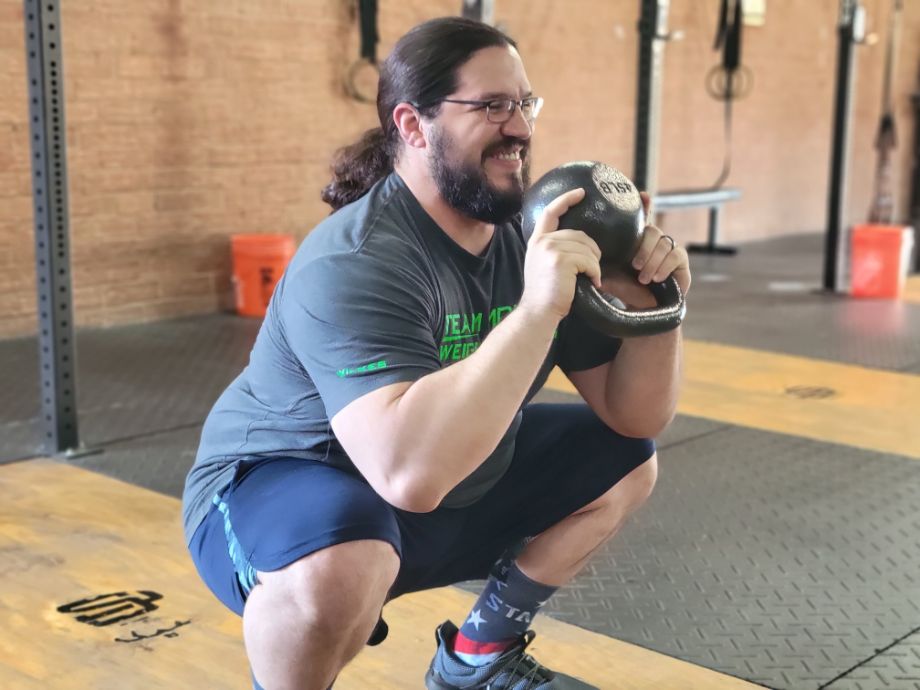
- Bodyweight squat: A basic squat performed without weights that focuses on reaching proper depth while maintaining an upright torso.
- Goblet squat: This beginner-friendly squat variation involves holding a kettlebell or dumbbell at chest level, which forces you to engage your core.
- Back squat: A weighted squat with a barbell resting on your upper back that effectively targets your quads, glutes, and hamstrings.
- Front squat: A squat variation where you balance a barbell across your front delts, placing more emphasis on your quads, core, and upper body.
- Box squat: Performing a squat to a box or weight bench can help build explosive power and strength.
RELATED: 21 Best Squat Variations
Hinge
Hip hinge exercises are crucial for developing posterior chain strength and power. Key exercises include:
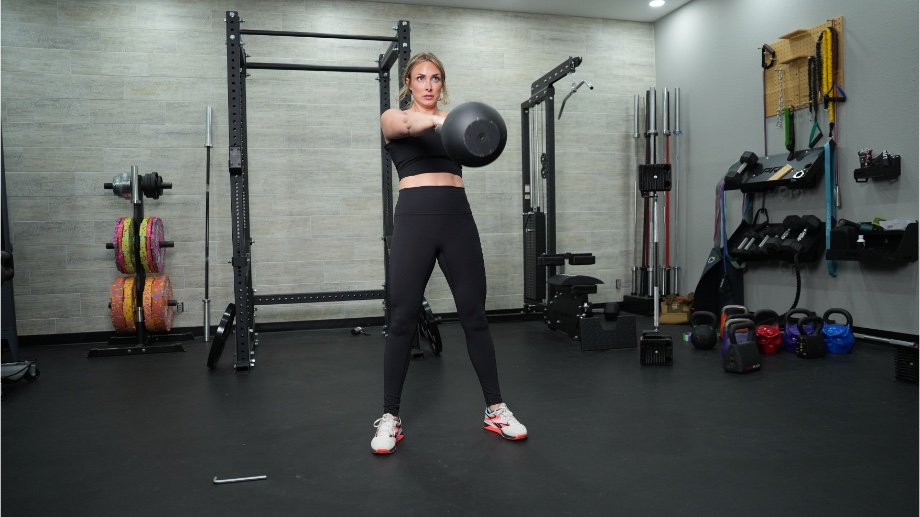
- Deadlift: Lifting a barbell from the ground to a standing position, thus engaging the entire posterior chain. It’s fundamental for building overall body strength and power.
- Romanian deadlift: Also referred to as the straight-leg deadlift, this variation targets your glutes and hamstrings.
- Kettlebell swing: A dynamic movement using a kettlebell to develop explosive hip power and strengthen the posterior chain.
- Good morning. This exercise emphasizes the lower back, hamstrings, and glutes by requiring you to hinge at your hips with a barbell on your upper back.
- Hip thrust: Lifting your hips by driving through your heels while your upper back rests on a bench. This move targets your glutes and helps develop a strong, stable core.
RELATED: 13 Posterior Chain Exercises
Lunge
Lunge exercises are fundamental lower-body movements that target your glutes, hamstrings, and quads, enhancing strength, stability, and functional fitness.
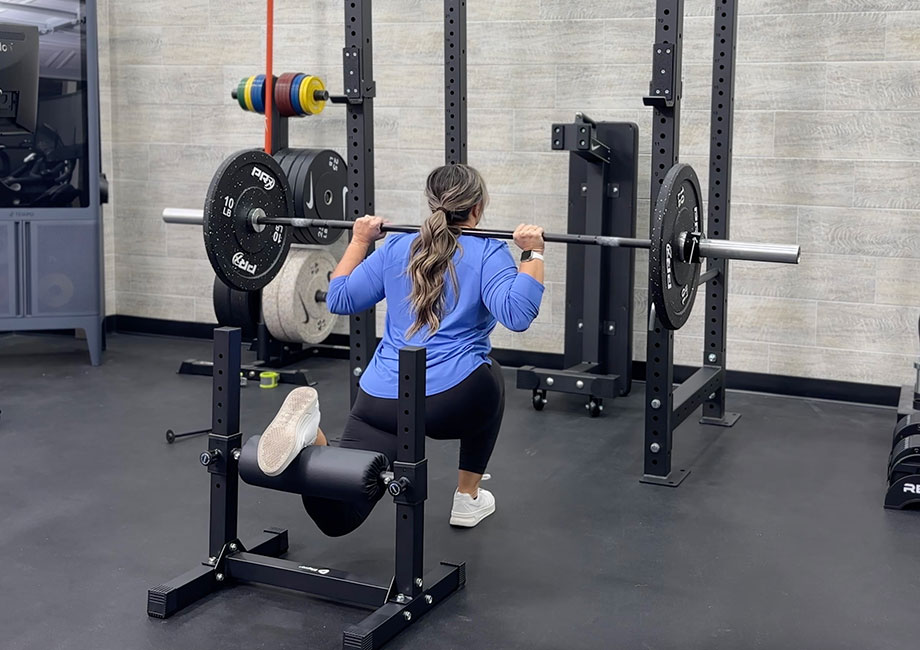
- Walking lunge: Alternating legs as you lunge forward for a distance, promoting balance and coordination. It targets your quadriceps, hamstrings, and glutes.
- Reverse lunge: Stepping backward into a lunge, reducing knee stress and emphasizing the glutes and hamstrings. It’s great for improving lower body strength and stability.
- Bulgarian split squat: A single-leg squat variation with the rear foot on a bench, enhancing balance and unilateral leg strength.
- Lateral lunge: By stepping to the side into a lunge, this exercise focuses on the inner thighs (hip adductors) and improves lateral movement.
RELATED: 10 Best Lunge Alternatives
Push
Push exercises primarily engage your chest, shoulders, and triceps. Here are some of my go-to’s when it’s time to press.
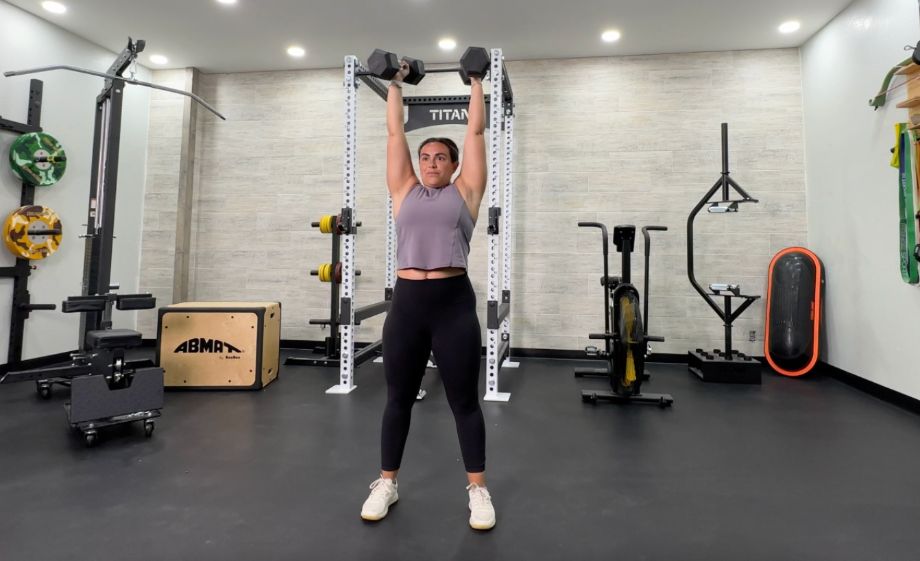
- Push-up: A classic bodyweight exercise that targets our chest, shoulders, and triceps while engaging your core.
- Bench press: A horizontal push movement performed with a barbell or dumbbells on a weight bench that primarily targets your pectorals, triceps, and shoulders.
- Overhead press: A vertical push movement where you lift a barbell or dumbbells overhead, strengthening your shoulders and upper back.
- Dumbbell shoulder press: Pressing dumbbells overhead while seated or standing, focusing on your deltoids and triceps.
- Incline bench press: A bench press variation performed on an inclined bench, emphasizing the upper pectorals and shoulders more.
RELATED: 11 Push Day Exercises
Pull
Pull exercises require your lats, rhomboids, and other back muscles to pick up the slack. From the good ol’ pull-up to the inverted row, these are my favorite pulling movements.
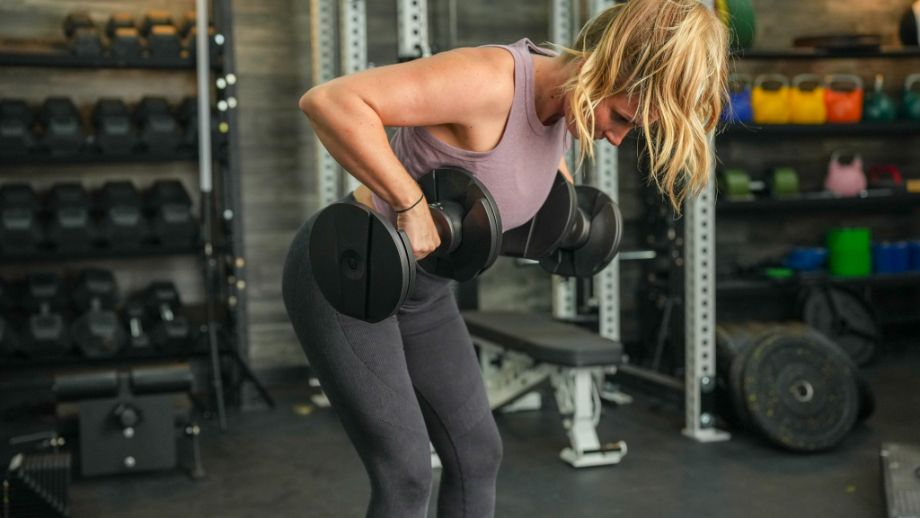
- Pull-up: A bodyweight exercise targeting the lats, biceps, and upper back by pulling your body up toward the bar. It’s excellent for developing upper-body strength and muscle mass.
- Bent-over dumbbell row: A dumbbell exercise focusing on your upper back, lats, and biceps by rowing the weight toward your torso.
- Lat pulldown: A machine-based exercise mimicking the pull-up, allowing for variable resistance and targeting the lats and upper back.
- Inverted row: A bodyweight exercise that targets your back muscles by pulling yourself toward a bar while keeping your body straight and facing upwards.
RELATED: The Best Pull-Up Variations For All Skill Levels
Rotation
Rotation exercises engage and strengthen your core muscles by rotating your torso, which is essential for improving functional strength, stability, and preventing injuries in everyday activities and sports.
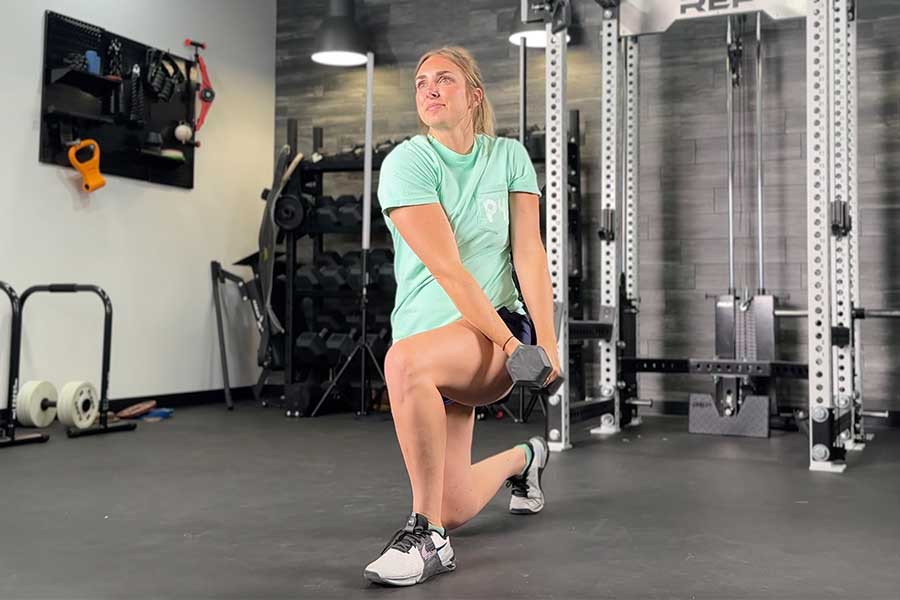
- Russian twist: A core exercise involving seated torso rotations, engaging your obliques and stabilizing your core. It enhances rotational strength and abdominal endurance.
- Cable woodchopper: A dynamic movement using a cable machine to simulate a chopping motion, strengthening your obliques and rotational power.
- Medicine ball rotational throw: A plyometric exercise involving a rotational throw with a medicine ball, enhancing core strength and power.
- Bicycle crunch: A core exercise where you alternate bringing your elbows to opposite knees, engaging your obliques.
- Landmine twist: Using a barbell anchored at one end, rotate the bar from side to side, focusing on your obliques and core stability.
RELATED: Rotation And Anti-Rotation Exercises
Gait
Whether walking, jogging, or sprinting, these exercises improve your balance, coordination, and cardiovascular health by promoting efficient movement.
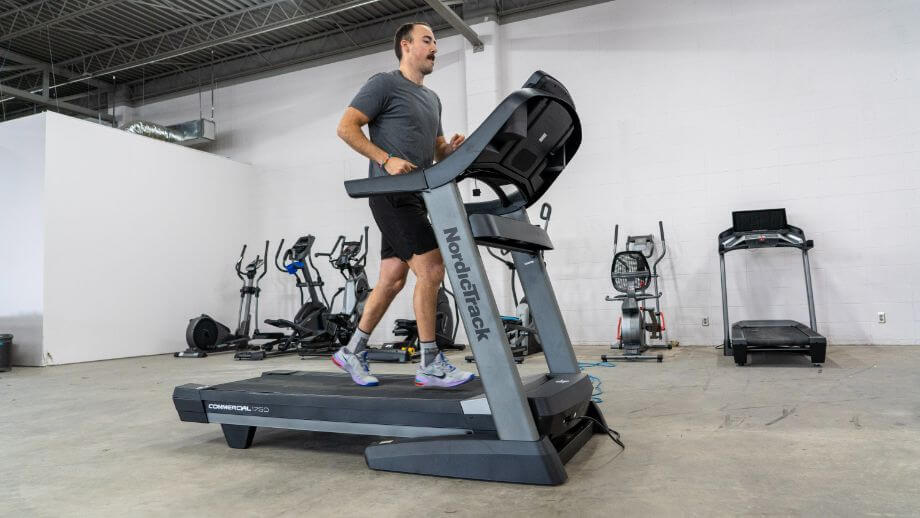
- Walking: Perhaps the fundamental movement pattern for low-impact cardio exercise and overall fitness.
- Jogging: A moderate-intensity gait pattern for improving cardiovascular health and endurance.
- Sprinting: A high-intensity running exercise that develops explosive power, speed, and anaerobic capacity.
- Farmer’s walk: Walking while carrying heavy weights in each hand, focusing on grip strength and overall stability.
- Hill running: Running up a hill at maximum effort, increasing lower-body strength, explosive power, and cardiovascular endurance.
RELATED: Is Walking Backwards Good For You?
Benefits of Performing Fundamental Movement Patterns
Why structure your workouts around these basic movement patterns? Whether you’re focused on building strength or developing better mobility, there are several benefits to performing the magnificent seven.
May Enhance Your Mobility And Stability
Regularly training these patterns can improve joint stability and mobility, reducing the risk of injuries and enhancing overall movement quality. Lunges, for example, help improve balance and coordination.
RELATED: Best Mobility Exercises
Can Increase Your Functional Strength
These movements mimic everyday actions, enhancing your ability to perform daily tasks efficiently and safely. For instance, squats and deadlifts can help improve your ability to lift heavy objects from the ground.
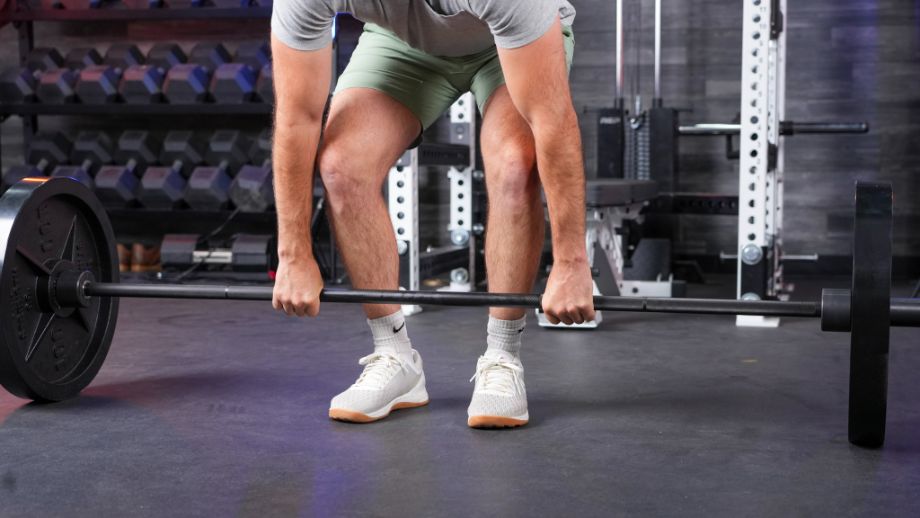
RELATED: 12 Benefits Of Strength Training
Can Help Improve Your Athletic Performance
These movements build a solid foundation of strength, power, and coordination, which can translate to better performance in various sports and physical activities. For example, athletes often use deadlifts and squats to increase their explosive power.
Promotes Balanced Muscle Development
Fundamental movement patterns engage multiple muscle groups, promoting balanced muscle development and preventing imbalances, especially true if you include single-arm and single-leg variations—aka unilateral exercises. This can prevent overuse injuries and improve overall aesthetics.
RELATED: Unilateral Exercises: Advice From a CPT
Injury Prevention and Safety Tips
Preventing injuries while performing fundamental movement patterns is paramount for long-term success. Key strategies include mastering proper form, using appropriate loads, and listening to your body. Start with lighter weights to perfect your technique before progressing to heavier loads.
Mobility and flexibility issues can hinder your performance. For example, tight hips can affect your ability to perform deep squats and proper lunges, while limited ankle mobility can cause compensations that lead to knee and lower back strain. Similarly, poor thoracic spine mobility can impair your ability to effectively perform overhead presses and rotational movements.
RELATED: Thoracic Mobility Exercises
A comprehensive warm-up routine with mobility drills, dynamic stretches, and light cardio can help prepare your muscles and joints for the upcoming workout. For instance, hip flexor exercises, ankle dorsiflexion exercises, and thoracic spine rotations can significantly improve your range of motion.
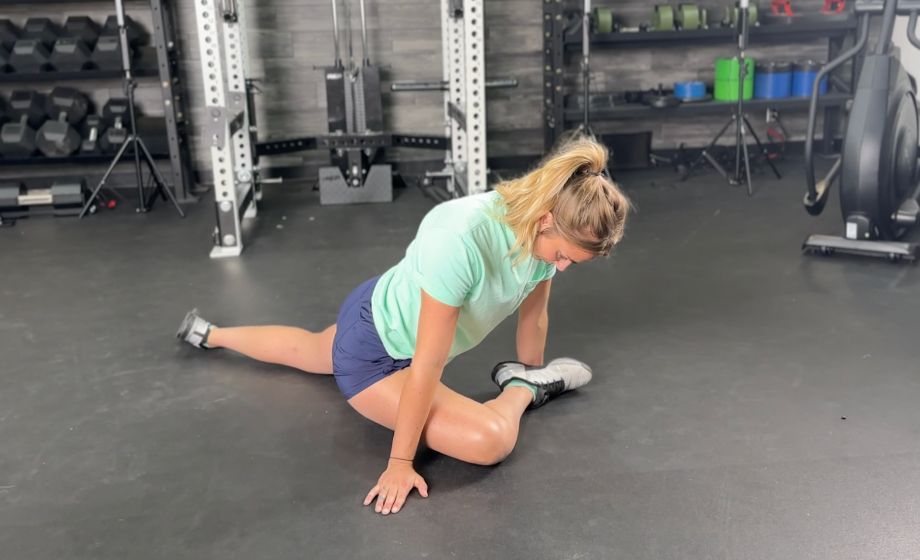
Cooling down with static stretching and foam rolling can help alleviate muscle tightness and promote recovery. Aim for at least one or two rest days per week to allow your body to recover and adapt to the training stimulus.
RELATED: 14 Cool Down Exercises
The Physiology of Fundamental Movement Patterns
Each movement pattern engages different muscle groups and requires a coordinated effort. Knowing which muscles are involved can help you focus on proper form, prevent injuries, and maximize your workout benefits.
Squat
| Muscle Group | Function |
| Quadriceps | Knee extension |
| Glutes | Hip extension |
| Hamstrings | Assist in hip extension |
| Core | Stabilize the spine |
Hinge
| Muscle Group | Function |
| Hamstrings | Primary mover for hip extension |
| Glutes | Assist in hip extension |
| Spinal erectors | Stabilize the spine |
| Core | Maintain stability |
Lunge
| Muscle | Function |
| Hamstrings | Primary mover for hip extension |
| Glutes | Assist in hip extension |
| Spinal erectors | Stabilize the spine |
| Core | Maintain stability |
Push
| Muscle Group | Function |
| Pectorals | Primary mover for pushing action |
| Triceps | Elbow extension |
| Deltoids | Assist in shoulder movement |
| Core | Stabilize the body |
Pull
| Muscle Group | Function |
| Latissimus dorsi | Primary mover for pulling actions |
| Biceps | Elbow flexion |
| Rhomboids | Retract the scapulae |
| Core | Provide stability |
Rotation
| Muscle Group | Function |
| Obliques | Primary muscles for rotation |
| Core | Stabilize the spine and assist in rotation |
| Hip flexors | Assist in rotational movement |
Gait
| Muscle Group | Function |
| Glutes | Propel the body forward |
| Hamstrings | Assist in hip extension |
| Quadriceps | Knee extension |
| Calves | Assist in foot propulsion |
| Core | Maintain stability |
How To Assess Your Fundamental Movement Patterns
Assessing your fundamental movement patterns is essential for identifying areas of strength and weakness, allowing you to create a targeted and effective training program. One of the most popular tools for this purpose is the Functional Movement Screen (FMS)1.
The FMS involves a series of seven tests that evaluate mobility, stability, and overall movement efficiency. These tests include the deep squat, hurdle step, in-line lunge, shoulder mobility, active straight-leg raise, trunk stability push-up, and rotary stability. Scoring each movement allows you to pinpoint specific deficiencies and asymmetries that need attention.
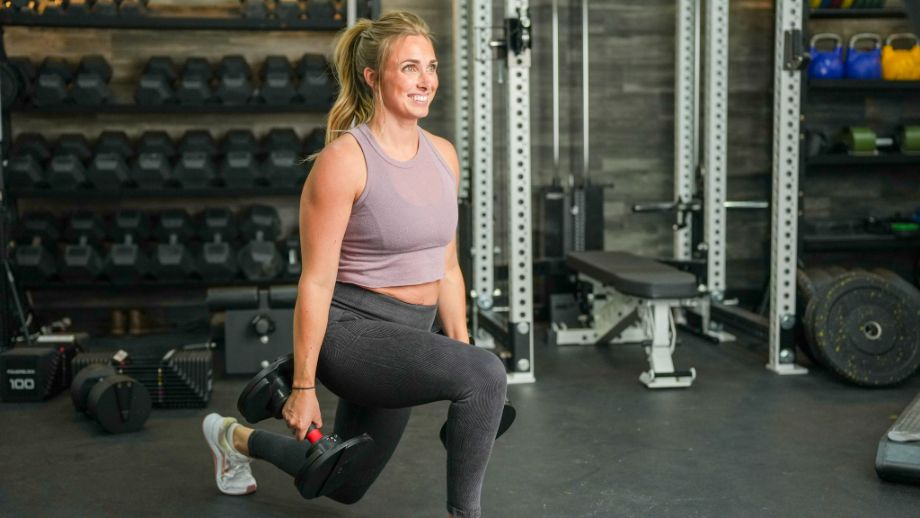
In addition to the FMS, you can perform self-assessments using mirrors, video recordings, or the guidance of a CPT or fitness professional. Look for key indicators such as knee alignment during squats, spinal posture during hinges, and balance during lunges. Routine assessments can help you track progress, adjust your training regimen, and prevent potential injuries by addressing poor movement mechanics early on.
Fundamental Movement Patterns: Final Thoughts
Mastering fundamental movement patterns is essential for building a strong, balanced, and functional body. Incorporating these patterns into your training can enhance your strength, stability, and overall fitness. Remember to focus on proper form and challenge yourself by upping the weights, reps, and number of sets as you progress with mastering the magnificent seven.
- Squat
- Hinge
- Lunge
- Push
- Pull
- Rotation
- Gait
Fundamental Movement Patterns: FAQs
What are the seven fundamental movement patterns?
The seven fundamental movement patterns include the squat, hinge, lunge, push, pull, rotation, and gait. These patterns encompass the essential movements required for daily life and effective physical training.
How can I incorporate fundamental movement patterns into my workout routine?
Incorporate fundamental movement patterns into your workout routine by including exercises that target each pattern, such as squats, deadlifts, lunges, push-ups, pull-ups, Russian twists, and running or sprinting. Structuring your workouts to balance these patterns ensures comprehensive fitness and reduces the risk of muscular imbalances.
Why are the seven fundamental human movements important in training programs?
The seven fundamental human movements form the foundation of functional fitness, ensuring balanced muscle development, improved strength, and enhanced biomechanical efficiency. Incorporating these patterns helps prevent injuries and promotes better performance in daily activities and athletic pursuits.
How do fundamental movement patterns relate to athletic performance and injury prevention?
Fundamental movement patterns enhance athletic performance by building a strong, stable, coordinated body to perform complex movements. Properly training these patterns reduces the risk of injuries by improving joint stability, mobility, and overall movement mechanics.
References
- Cook, G., Burton, L., Hoogenboom, B. J., & Voight, M. (2014). FUNCTIONAL MOVEMENT SCREENING: THE USE OF FUNDAMENTAL MOVEMENTS AS AN ASSESSMENT OF FUNCTION ‐ PART 1. International Journal of Sports Physical Therapy, 9(3), 396-409. https://www.ncbi.nlm.nih.gov/pmc/articles/PMC4060319/
Further reading

Before you can run, you must learn to walk. While it may be tempting to jump ahead, the key to accomplishing your fitness goals lies in mastering the basics. Fundamental movement patterns like the squat, hinge, and lunge are the building blocks of all exercises, empowering anyone looking to enhance their strength, stability, and coordination. As a certified personal trainer (CPT) who’s helped dozens of clients hone their technique and become more comfortable in the gym, » Read more about: The Seven Fundamental Movement Patterns—And How To Master Them » Read more

Build your own fitness space for around $2,000 with the best budget home gym equipment on Amazon. Read more

Check out our obé Fitness review for our take on this workout app designed for women. Read more

These shoes claim to relieve foot pain, but do they really work? Find out what our testers thought in this KURU ATOM shoes review. Read more

